
Research – analysis: prof. Giannis Maniatis
With the assistance of PhD students: I. Voulgari, A. Andresaki, S. Gandzula
In European markets, energy prices in the first half of 2022 were about 3-4 times higher than the average for 2016-2021, mainly due to the huge increase in natural gas prices. In America, there was a decrease in energy prices in 2022 compared to 2021. Prices will remain high at the beginning of 2023, they will decrease in the middle of the year, but will always remain multiples of the period 2016-2016. 2021.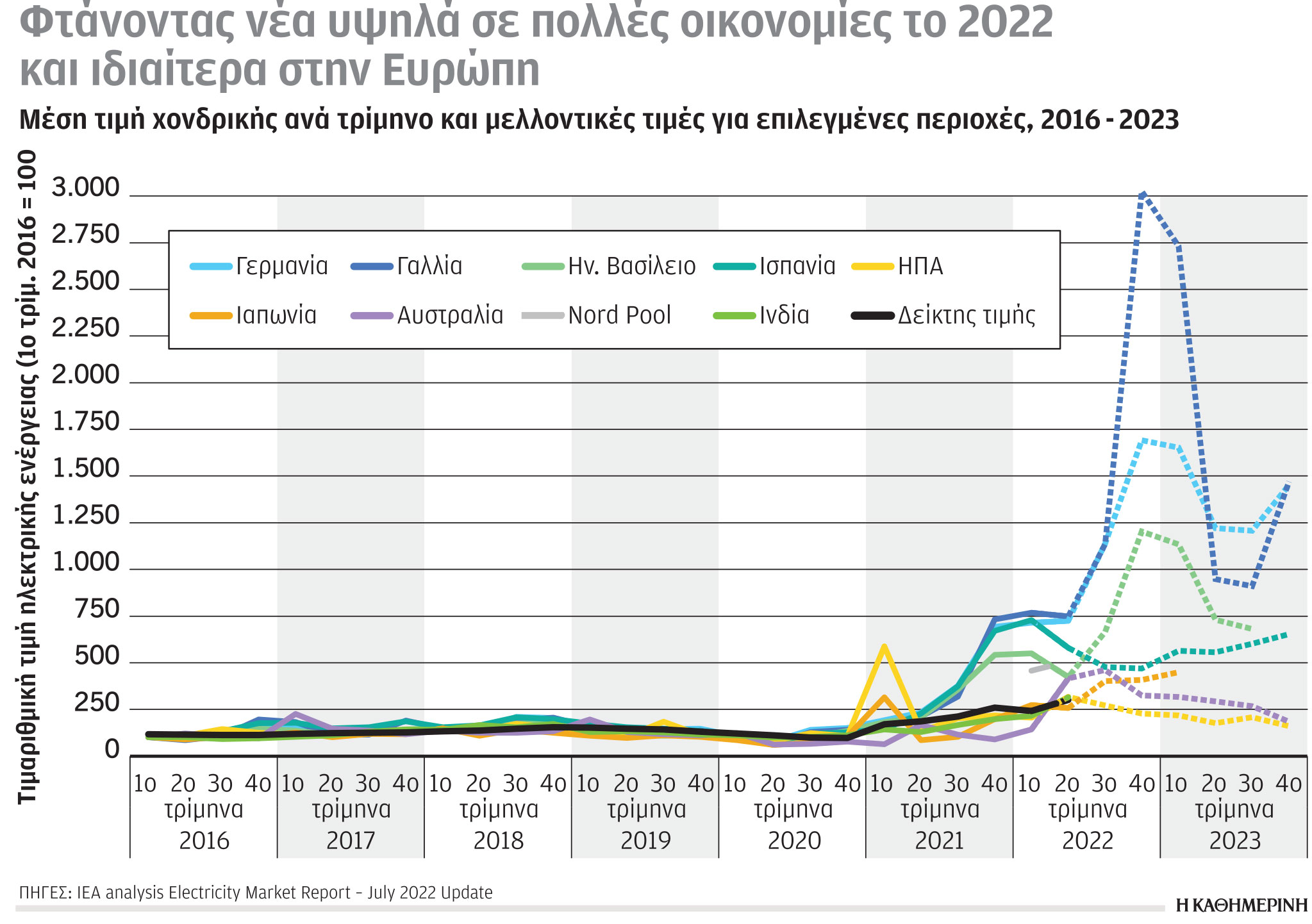
Decrease in production from RES
According to an annual study prepared by Shell, the production of energy from renewable energy sources (RES) in Europe has decreased by 3%, despite an overall increase in renewable energy capacity by 6%. In general, Europe saw a decline in energy production from natural gas, hydroelectric power and wind last year, while coal and nuclear power showed a simultaneous increase.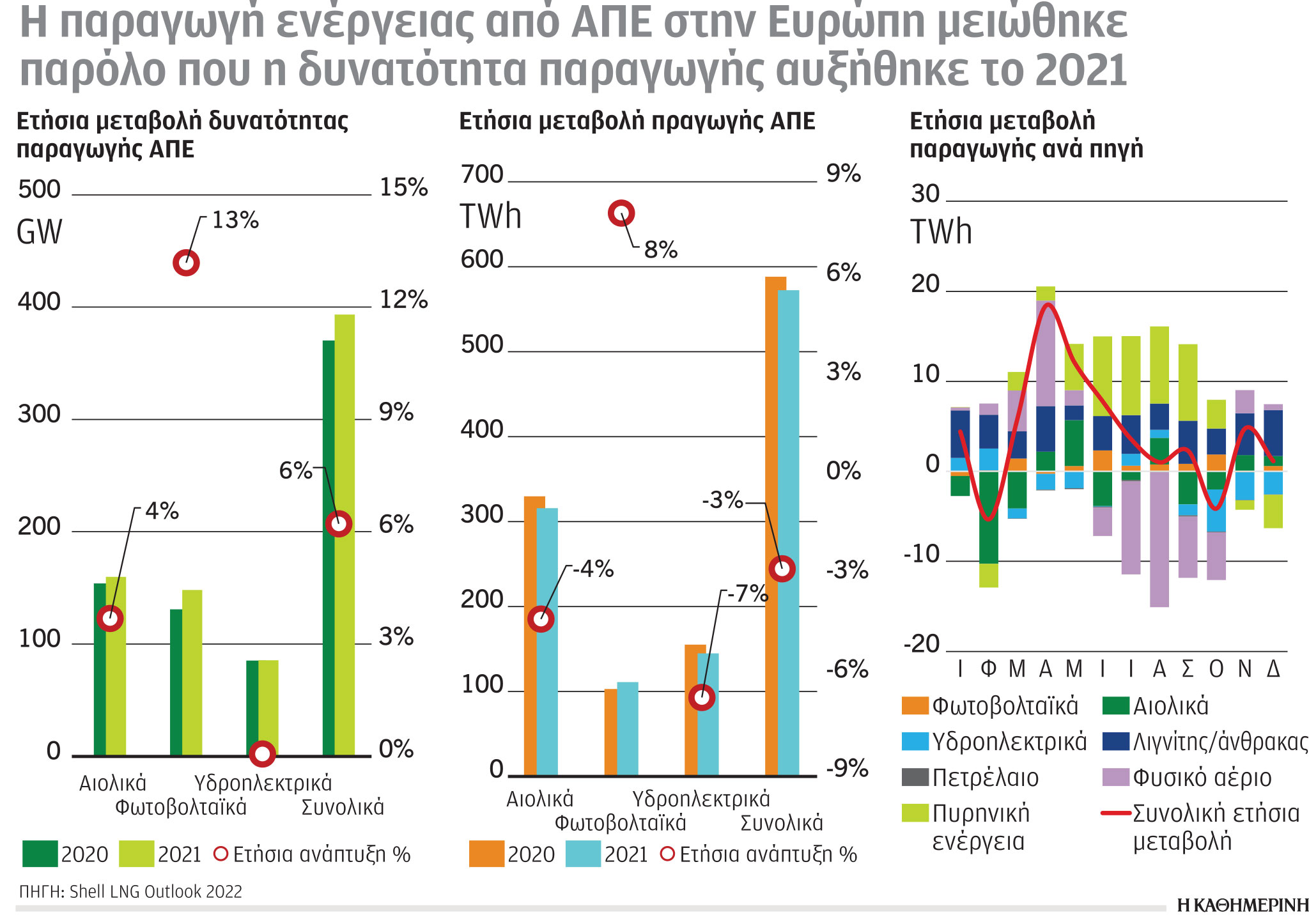
In Europe, 74% of US LNG
During the first four months of 2022, the United States exported 74% of its liquefied natural gas (LNG) to Europe, and in 2021 exports were 34%. By contrast, in 2020 and 2021, Asia was the top destination for US liquefied natural gas (LNG) exports (around 50%).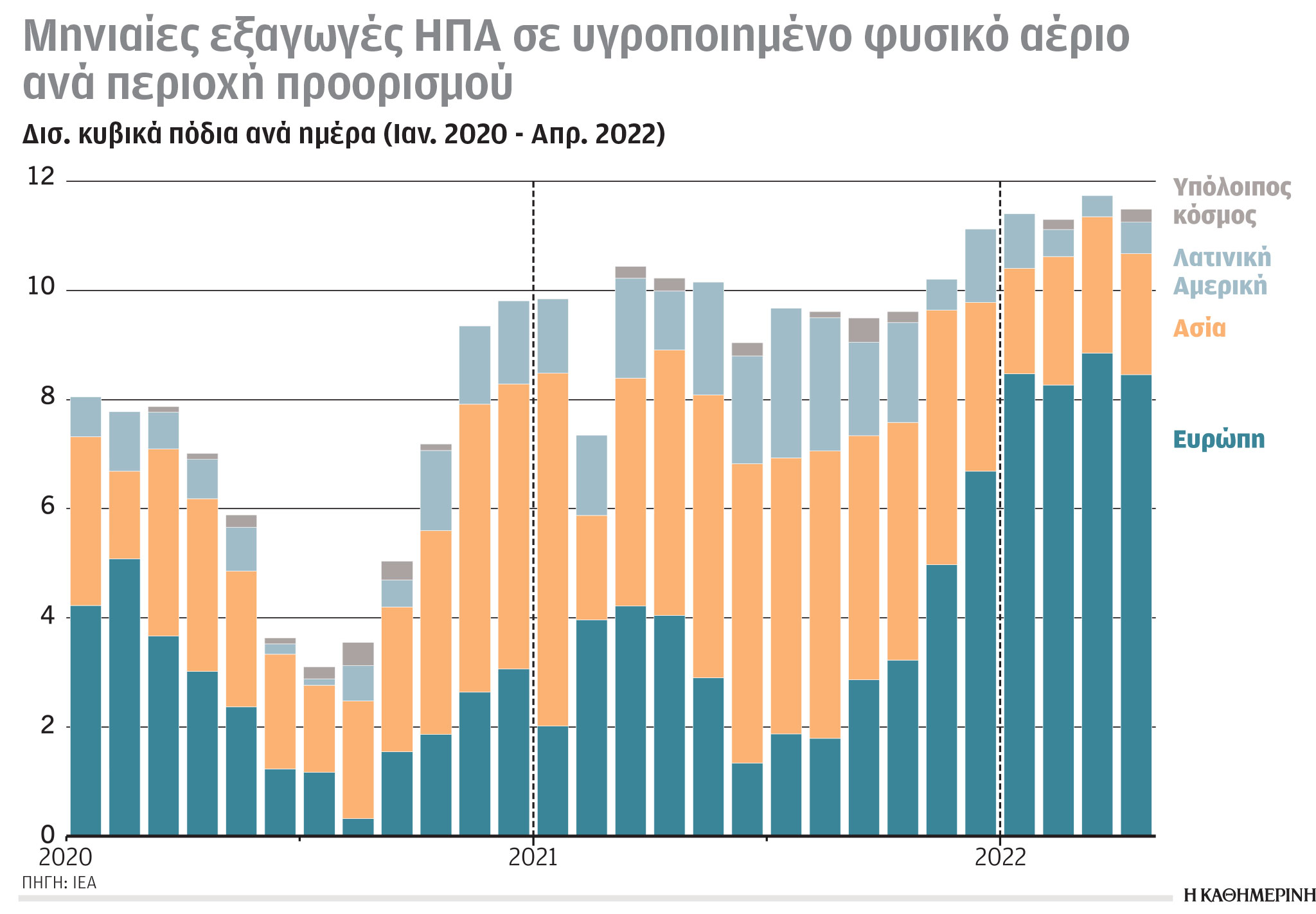
2207 100% renewable energy
Over the past half century, renewable energy sources (RES) account for only 13-14% of world energy. From 2010 to the present day, the share of RES has grown to 15.7%, while, according to the International Energy Organization, it will reach 28% in 2050, and the total energy production from RES (100%) will be realized no earlier than 2207( ! ).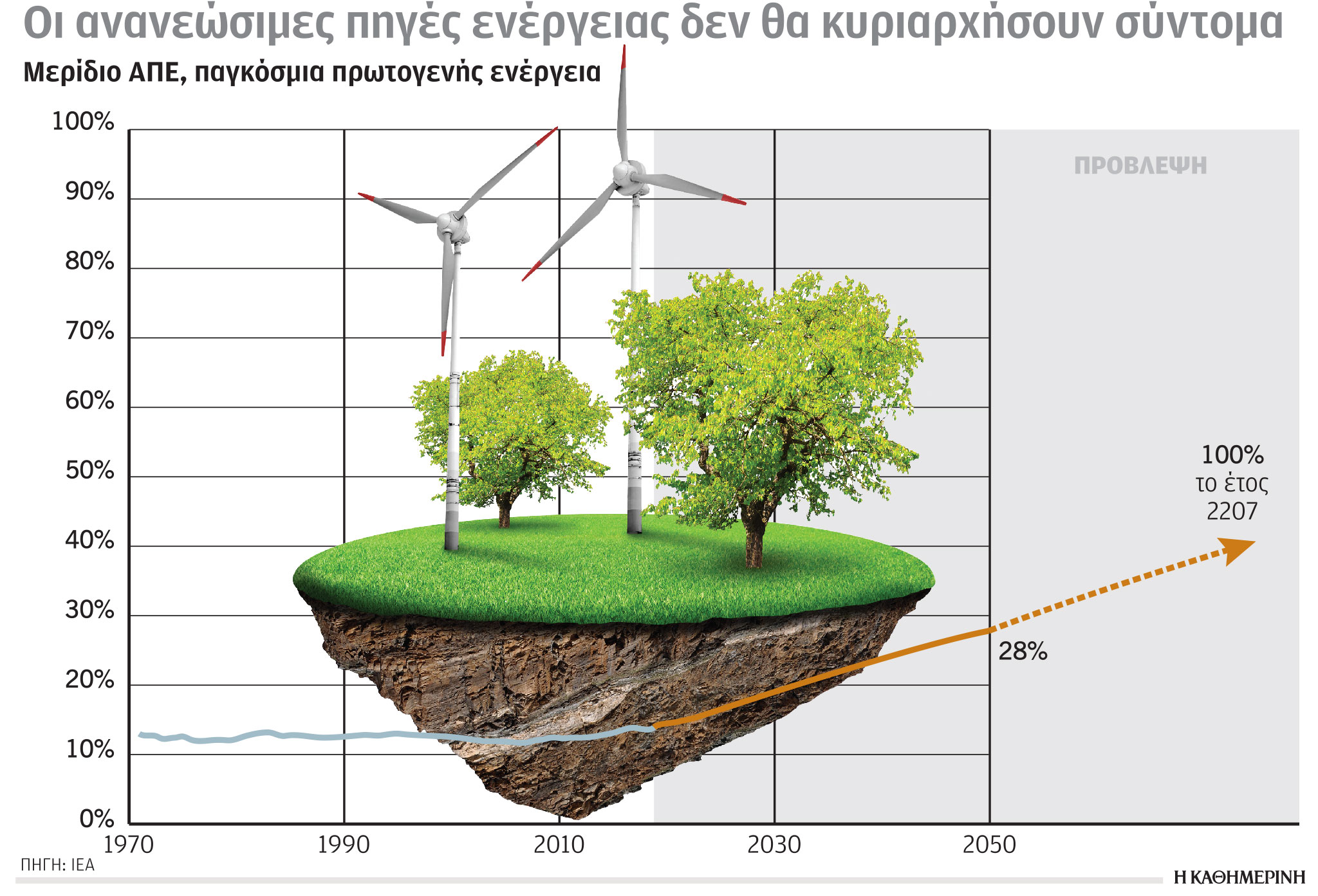
Gas flows from FSRU are increasing
Northwestern European FSRUs may overtake Russia in terms of natural gas supply to the grid already at the beginning of 2023 (by about 50 million m3/day). The installation of new floating terminals across Europe is accelerating the growth of LNG, and maritime transport is rapidly becoming an important tool for balancing supply and demand in the region.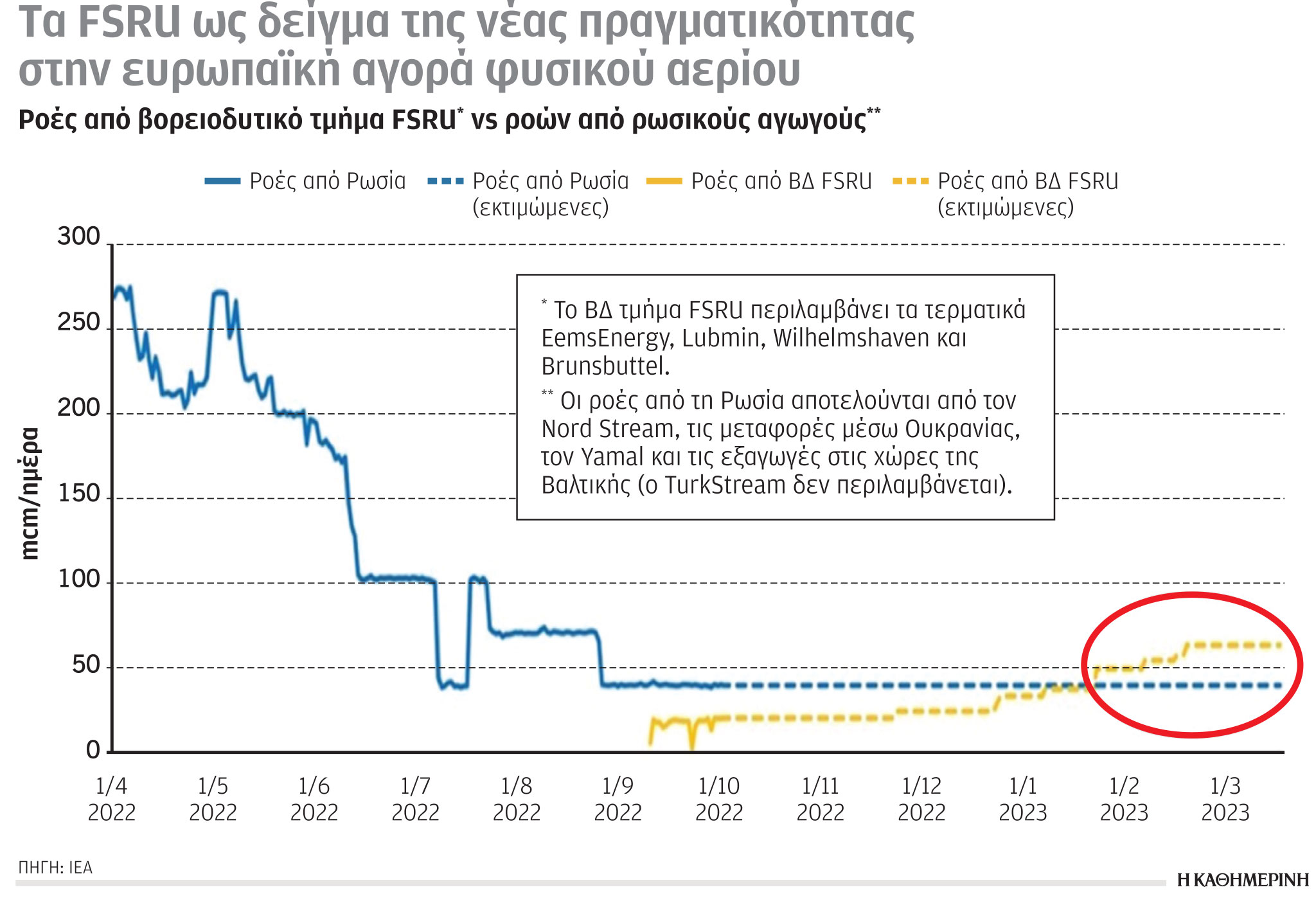
Scenarios for the use of natural gas until 2040
In a zero-emissions scenario, by 2040 natural gas demand should be reduced to 3,000 billion cubic meters. In the stated political scenario, natural gas consumption will increase to more than 4,500 billion cubic meters. m (more than 2,500 bcm in electricity, 1,000 bcm
Source: Kathimerini
Anna White is a journalist at 247 News Reel, where she writes on world news and current events. She is known for her insightful analysis and compelling storytelling. Anna’s articles have been widely read and shared, earning her a reputation as a talented and respected journalist. She delivers in-depth and accurate understanding of the world’s most pressing issues.